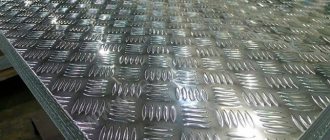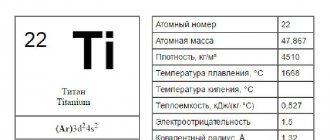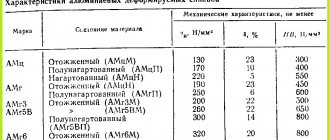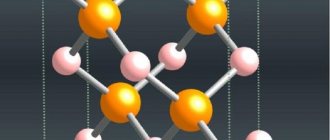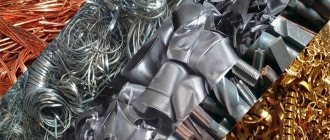04/30/2021 Author: VT-METALL
Issues discussed in the material:
- How was aluminum discovered and what are its main properties?
- Basic physical properties of aluminum
- Basic chemical properties of aluminum
- How to use the basic properties of aluminum
- How to use the basic properties of aluminum in construction
The basic properties of aluminum make this material truly versatile and valuable. It is used in all types of industrial production, in agriculture, in everyday life, in commerce. It has a huge number of advantages over steel and other types of metal.
The most popular applications of aluminum are the manufacture of metal structures and metalworking. Read on to learn about the properties of the metal and where exactly they found their application.
Aviation
At the present stage of development of subsonic and supersonic aviation, aluminum alloys are the main structural materials in aircraft construction.
Alloys of the 2xxx, 3xxx, 5xxx, 6xxx and 7xxx series are widely used in US aviation. The 2xxx series is recommended for work at high operating temperatures and with increased values of the fracture toughness coefficient. Alloys of the 7xxx series - for operation at lower temperatures of significantly loaded parts and for parts with high resistance to stress corrosion. For lightly loaded components, alloys of the 3xxx, 5xxx and 6xxx series are used. They are also used in hydraulic, oil and fuel systems.
In Russia, in the manufacture of aircraft, high-strength aluminum alloys Al-Zn-Mg-Cu and medium and high-strength Al-Mg-Cu alloys, strengthened by heat treatment, are successfully used. They are a structural material for the skin and internal alloy elements of an aircraft airframe (fuselage, wing, keel, etc.). Alloy 1420, which belongs to the Al-Zn-Mg system, is used in the construction of welded fuselage of passenger aircraft. In the manufacture of seaplanes, the use of weldable corrosion-resistant magnolia alloys (AMg5, AMg6) and Al-Zn-Mg alloys (1915, B92, 1420) is envisaged.
Figure 1 – Civil aircraft
Weldable aluminum alloys have an undeniable advantage when creating space technology objects. High values of specific strength and specific rigidity of the material made it possible to ensure the manufacture of tanks, intertank and nose parts of the rocket with high longitudinal stability. The advantages of aluminum alloys (2219, etc.) include their performance at cryogenic temperatures in contact with liquid oxygen, hydrogen and helium. These alloys undergo so-called cryogenic hardening, i.e. strength and ductility increase in parallel with decreasing temperature.
Alloy 1460 belongs to the Al-Cu-Li system and is more promising for the design and manufacture of tank structures in relation to cryogenic fuels - compressed oxygen, hydrogen or natural gas.
Aluminum crystal lattice:
| 500 | Crystal cell | |
| 511 | Crystal grid #1 | |
| 512 | Lattice structure | Cubic face centered |
| 513 | Lattice parameters | 4.050 Å |
| 514 | c/a ratio | |
| 515 | Debye temperature | 394 K |
| 516 | Name of space symmetry group | Fm_3m |
| 517 | Symmetry space group number | 225 |
Shipbuilding
Aluminum and its alloys are increasingly used in shipbuilding. Aluminum alloys are used to make ship hulls, deck superstructures, communications and various types of ship equipment.
The main advantage of introducing aluminum and its alloys compared to steel is the reduction in the weight of ships, which can reach 50–60%. As a result, it becomes possible to increase the vessel’s carrying capacity or improve its tactical and technical characteristics (maneuverability, speed, etc.).
The most widely used aluminum alloys for the manufacture of river and sea fleet structures are the magnesium alloys AMgZ, AMg5, AMg61, as well as the alloys AMts and D16. The hull of a high-capacity vessel is made of steel, while the superstructure and other auxiliary equipment are made of aluminum alloys. Fishing longboats are manufactured from AMg5 alloy (sheathing).
Weldable alloys of the 5xxx and 6xxx series are widely used in US shipbuilding. Where high strength (500 MPa) is required, semi-finished products from alloys of the 2xxx and 7xxx series are used.
Railway transport
The harsh operating conditions of railway rolling stock (long service life and ability to withstand shock loads) place special demands on structural materials.
Figure 2 – Freight train
The main characteristics of aluminum and its alloys, revealing the feasibility of their use in railway transport, are high specific strength, low inertial force, and corrosion resistance. The introduction of aluminum alloys in the manufacture of welded containers increases their durability when transporting a number of products from the chemical and petrochemical industries.
Aluminum and its alloys are used in the manufacture of the car body and frame. For the car, weldable medium-strength alloys of the AMg3, AMr5, Amg6 and 1915 grades are recommended. Aluminum alloys are promising alloys for refrigerated cars. Depending on the products of the chemical industry, the brand of welded material for tank boilers is selected.
In the USA, rolling stock is manufactured from weldable alloys of the 6xxx series, 5xxx series and alloy 7005, obtaining optimal strength characteristics and high corrosion resistance of welded elements.
Toxicity
It has a slight toxic effect, but many water-soluble inorganic aluminum compounds remain in a dissolved state for a long time and can have a harmful effect on humans and warm-blooded animals through drinking water. The most toxic are chlorides, nitrates, acetates, sulfates, etc. For humans, the following doses of aluminum compounds (mg/kg body weight) have a toxic effect when ingested: aluminum acetate - 0.2-0.4; aluminum hydroxide - 3.7-7.3; aluminum alum - 2.9. Primarily affects the nervous system (accumulates in nervous tissue, leading to severe disorders of the central nervous system). However, the neurotoxicity of aluminum has been studied since the mid-1960s, since the accumulation of the metal in the human body is prevented by its elimination mechanism. Under normal conditions, up to 15 mg of the element per day can be excreted in the urine. Accordingly, the greatest negative effect is observed in people with impaired renal excretory function.
The standard for aluminum content in drinking water is 0.2 mg/l. In this case, this MPC can be increased to 0.5 mg/l by the chief state sanitary doctor for the relevant territory for a specific water supply system.
Sources
- https://www.RusCable.ru/info/general/aluminum/
- https://chemege.ru/aluminium/
- https://TheMineral.ru/metally/alyuminij
- https://chem.ru/aljuminij.html
- https://himsnab-spb.ru/article/ps/al/
Automobile transport
One of the main requirements for materials used in automobile transport is low weight and fairly high strength indicators. The corrosion resistance and good decorative surface of the material are also taken into account.
Figure 3 – Car
The high specific strength of aluminum alloys increases the carrying capacity and reduces the operating costs of mobile vehicles. The high corrosion resistance of the material extends service life and expands the range of transported goods, including liquids and gases with high aggressive concentrations.
In the manufacture of frame elements and body trim for semi-trailers, vans, refrigerators, livestock carriers, etc. Promising materials are aluminum alloys AD31, 1915 (extruded profiles) and alloys AMg2, AMg5 (sheet).
Aluminum alloys AMts, AMgZ and 1915 are used in the manufacture of individual components of a passenger car (attachment parts, bumpers, cooling radiators, heaters).
In the US automotive industry, aluminum weldable alloys of the 3xxx, 5xxx and 6xxx series are widely used.
Beams and frames of heavy trucks are made from pressed semi-finished alloys 2014 and 6061. Panels and individual elements made from 5052 alloy are used to manufacture the cabin. As a lining material of the truck body, a sheet of alloy 5052, 6061, 2024, 3003 and 5154 is used. The body racks are made of pressed semi -finished alloys of alloys 6061 and 6063. Magnal alloys of the 5XXX series (5052, 5086, 5154 and 5454) are the main material in the manufacture of cargo stations .
Construction
The prospects for using aluminum alloys in building structures are confirmed by technical and economic calculations and many years of world practice in the field of construction of various construction projects.
The introduction of aluminum alloys in construction reduces metal consumption, increases the durability and reliability of structures when operating under extreme conditions (low temperature, earthquake, etc.). Depending on the purpose of building aluminum structures, various grades of alloys are recommended: AD1, AMts, AMg2, AD31, 1915, etc.
Figure 4 – Building with translucent aluminum structures
Experience accumulated in the USA confirms the feasibility of using aluminum alloys in building structures. They use more aluminum than any other industry. In this case, preference is given to the introduction of weldable alloys of the 3xxx, 5xxx and 6xxx series.
Metal connections
Alloys are obtained by artificially adding other metals to aluminum in order to obtain the necessary properties. And today there is an endless number of compositions of such alloys that have the widest application.
- The most famous area of their application is aircraft manufacturing. For the production of aircraft, alloys consisting of aluminum, zinc and magnesium are used, which results in a super-strong and reliable material.
- Alloys of aluminum with iron, titanium, and nickel are also often used.
If you want to make something out of aluminum yourself, the following video will tell you how to melt it at home:
Petroleum and chemical industry
The development of new fields and increasing the depth of wells put forward certain requirements for materials used for the manufacture of parts and assemblies of oil and gas field equipment and equipment for processing oil products.
Figure 5 – Oil rig
The high specific strength of aluminum alloys makes it possible to reduce the weight of drilling equipment, facilitate their transportability and ensure the passage of deep wells.
Corrosion-resistant aluminum alloys make it possible to increase the operational reliability of drilling, tubing and oil and gas pipelines. Increased resistance to corrosion cracking makes it possible to use aluminum alloys in the manufacture of tanks for storing oil and its products.
The main structural material in the manufacture of drill pipes from aluminum alloys is D16 alloy.
Aluminum alloys AMg2, AMr3, AMg5 and AMg6 have shown high resistance to crude oil and some gasolines. Of the listed magnalium alloys, the most technologically advanced alloy for the manufacture of apparatus is the AMg2 alloy, especially in the manufacture of capacitors and refrigerators at oil refineries.
In the USA, equipment for the oil industry is made from aluminum alloys of the 3xxx, 5xxx and 6xxx series. In the design of drilling equipment, pipes made of alloy 6063 are used. Offshore platforms are assembled from pipes 6061, 6063, as well as from high-strength alloys of grades 2014 and 7075. Tanks, columns, condensers, etc. are made from aluminum ADOO, ADO and AD1. for the production of acetic acid, sulfonation of fatty alcohols, potassium chlorate, sodium and ammonium nitrate, hydrocyanic acid, etc.
The chemical industry recommends aluminum alloys AMts, AMg2, AMgZ, AMg5 for the manufacture of vessels operating under pressure at temperatures from – 196 to +150 °C.
Containers, columns, capacitors, etc. are made from aluminum ADOO, ADO and AD1. for the production of acetic acid, sulfonation of fatty alcohols, potassium chlorate, sodium and ammonium nitrate, hydrocyanic acid, etc.
In the USA, depending on the operating conditions of chemical industry equipment, alloys of the 1xxx, 3xxx, 5xxx series are used. In some cases, to ensure the greatest strength, thermally hardenable alloys 2xxx and 7xxx with reduced corrosion resistance are used.
Tanks for storing chemical products are made of highly corrosion-resistant alloys - 1100 or 3003; high pressure vessels - made of alloys 5052 or 6063; containers, tanks and other types of equipment for storing acetic acid, high-molecular fatty acids, alcohols and other products - from alloys 3003, 6061, 6063, 5052; containers for ozone-containing fertilizer solutions made of alloys 3004; 5052 and 5454; containers for storing ammonium nitrate solutions from alloys 1100, 3003, 3004, 5050, 5454, 6061 and 6062 [3].
Electrics
Aluminum and a number of alloys based on it are used in electrical engineering due to their good electrical conductivity, corrosion resistance, low specific gravity, and, importantly, lower cost compared to copper and its conductor alloys.
Depending on the value of electrical resistivity, aluminum alloys are divided into conductive and alloys with increased electrical resistance.
The specific electrical conductivity of electrical aluminum grades A7E and A5E is about 60% of the conductivity of annealed copper according to the international standard. Technical aluminum AD0 and electrical aluminum A5E are used for the manufacture of wires, cables and buses. Low-alloy aluminum alloys of the Al-Mg-Si system AD31, AD31E are used in the electrical industry.
Aluminum alloys, which increase its strength and improve other properties, are obtained by introducing alloying additives into it, such as copper, silicon, magnesium, zinc, and manganese.
Duralumin
Duralumin (duralumin, duralumin, from the name of the German city where industrial production of the alloy began) is an alloy of aluminum (base) with copper (Cu: 2.2 - 5.2%), magnesium (Mg: 0.2 - 2.7 %) manganese (Mn: 0.2 – 1%). Subject to hardening and aging, often clad with aluminum. It is a structural material for aviation and transport engineering.
Figure 6 – Duralumin sheet
Silumin
Silumin - light casting alloys of aluminum (base) with silicon (Si: 4 - 13%), sometimes up to 23% and some other elements: Cu, Mn, Mg, Zn, Ti, Be). Parts of complex configurations are made from it, mainly in the automotive and aircraft industries.
| Figure 7 – Silumin | Figure 8 – Magnalia |
Magnalia
Magnalia are alloys of aluminum (base) with magnesium (Mg: 1 – 13%) and other elements that have high corrosion resistance, good weldability, and high ductility. They are used to make shaped castings (casting magnals), sheets, wire, rivets, etc. (deformable magnals).
In terms of breadth of application, aluminum alloys occupy second place after steel and cast iron [4].
Properties of the aluminum atom:
| 200 | Properties of the atom | |
| 201 | Atomic mass ( molar mass ) | 26.9815386(8) amu (g/mol) |
| 202 | Electronic configuration | 1s2 2s2 2p6 3s2 3p1 |
| 203 | Electronic shell | K2 L8 M3 N0 O0 P0 Q0 R0 |
| 204 | Atomic radius (calculated) | 118 pm |
| 205 | Empirical atomic radius* | 125 pm |
| 206 | Covalent radius* | 121 pm |
| 207 | Ion radius (crystalline) | Al3+ 53 (4) pm, 67.5 (6) pm (in parentheses the coordination number is indicated - a characteristic that determines the number of nearest particles (ions or atoms) in a molecule or crystal) |
| 208 | Van der Waals radius | 184 pm |
| 209 | Electrons, Protons, Neutrons | 13 electrons, 13 protons, 14 neutrons |
| 210 | Family (block) | p-family element |
| 211 | Period in the periodic table | 3 |
| 212 | Group on the periodic table | 13th group (according to the old classification - the main subgroup of the 3rd group) |
| 213 | Emission spectrum |
Use in everyday life
By studying the effect of aluminum on various food products, scientists have found that when food comes into contact with aluminum, vitamins are not destroyed. This discovery led to the widespread use of aluminum in the food industry, in the form of aluminum cookware, as well as in cosmetics and household chemicals. A variety of equipment intended for food processing in sugar, confectionery, oil mills and other industries is made from aluminum.
Figure 9 – Aluminum cookware
There is an abundance of aluminum products, both in the kitchen of a large catering establishment and in the home kitchen: meat grinders, forks, spoons, cups, basins, aluminum utensils, etc. Aluminum foil is an excellent packaging material that preserves various products well. Cooking fat, margarine, ice cream, candy and much more are packaged in aluminum foil wrappers, which is why it is also called food grade aluminum. Toothpaste is traditionally packaged in aluminum tubes. To make it convenient to use, some products, such as processed cheese, are packaged in tubes with a screw-on lid. Astronauts take food into space in these tubes. Increasingly, thin sheet food-grade aluminum is used instead of tin in the production of cans, and manufacturers are making more and more tableware from aluminum [5].
Decrease temperature
Before you start melting metal, you can perform certain operations that will reduce the melting temperature. For example, sometimes aluminum powder is melted. In a powdered state, the metal begins to melt somewhat faster. But with such processing, there is a real danger that when interacting with oxygen contained in the atmosphere, aluminum powder will begin to oxidize with a large release of heat and the formation of metal oxides; this process occurs at a temperature of 2300 degrees. The main thing is to prevent contact between the melt and water at this moment of melting. This will cause an explosion.
Pharmaceuticals
Speaking about the versatility of aluminum, we cannot ignore an important fact: the metal from which dishes and airplanes are made is widely used to treat and prevent serious illnesses and is approved for these purposes by the World Health Organization. Of course, we are not talking about aluminum in its pure form, but about its compounds.
In 1926, it was discovered that diphtheria toxoid precipitated with alum (neutralized bacterial toxin) stimulates the production of antibodies much better than it in its pure form. Since then, aluminum salts have been most often used to enhance the effect of vaccines, since they are considered harmless to humans.
It is on the basis of aluminum that the most effective antacids are produced. Aluminum hydroxide, which neutralizes acid well, is needed to treat peptic ulcers, dyspepsia, and stomach irritation. Aluminum phosphate is suitable for the same purposes.
| Figure 10 - Medicines | Figure 11 - Deodorants |
But even those who have excellent health will benefit from a product containing aluminum, which is sold in any pharmacy, and not only that. We are talking about an antiperspirant deodorant. Even the ancient Greeks and Romans used alum to suppress secretion. Our grandmothers also used ordinary alum. Aluminum chloride was added to the first factory-made anti-sweat products, and the main agent in modern products is aluminum chlorohydrate. By the way, what the effect of their action is based on is still not known exactly [6].
Receipt
Aluminum is in first place among metals and in third place among all elements in terms of abundance in the earth's crust. Approximately 8% of the mass of the earth's crust is this metal. Aluminum is found in the tissues of animals and plants as a trace element. In nature, it is found bound in the form of rocks and minerals. The rocky shell of the earth, which is at the base of the continents, is formed precisely by aluminosilicates and silicates.
Aluminosilicates are minerals formed as a result of volcanic processes under appropriate high temperature conditions. During the destruction of aluminosilicates of primary origin (feldspars), various secondary rocks with a higher aluminum content (alunites, kaolins, bauxites, nephelines) were formed. Aluminum is included in secondary rocks in the form of hydroxides or hydrosilicates. However, not every aluminum-containing rock can be a raw material for alumina, a product from which aluminum is produced using the electrolysis method.
Aluminum is most often obtained from bauxite. Deposits of this mineral are common in countries of the tropical and subtropical zone. In Russia, nepheline ores are also used, deposits of which are located in the Kemerovo region and on the Kola Peninsula. When extracting aluminum from nephelines, potash, soda ash, cement and fertilizers are also produced along the way.
Bauxite contains 40-60% alumina. It also contains iron oxide, titanium dioxide, and silica. The Bayer process is used to isolate pure alumina. In an autoclave, the ore is heated with caustic soda, cooled, and the “red mud” (solid sediment) is separated from the liquid. Afterwards, aluminum hydroxide is precipitated from the resulting solution and calcined to obtain pure alumina. Alumina must meet high standards for purity and particle size.
Alumina (aluminum oxide) is extracted from the mined and enriched ore. The alumina is then converted into aluminum using electrolysis. The final stage is recovery by the Hall-Heroux process. The process is as follows: during the electrolysis of an alumina solution in molten cryolite, aluminum is released. The cathode is the bottom of the electrolysis bath, and the anode is carbon bars located in cryolite. Molten aluminum is deposited under a solution of cryolite with 3-5% alumina. The process temperature rises to 950°C, which is much higher than the melting point of aluminum itself (660°C). Deep purification of aluminum is carried out by zone melting or distillation through subfluoride.


